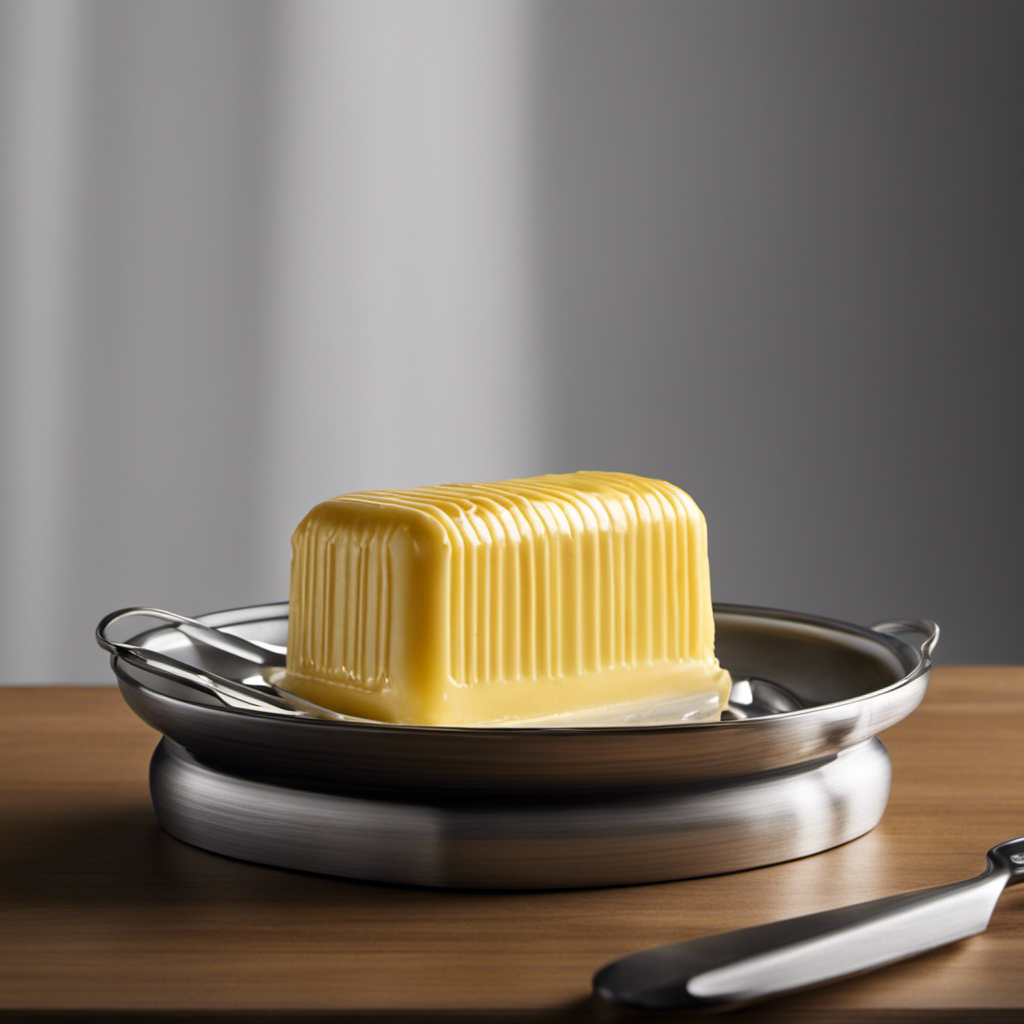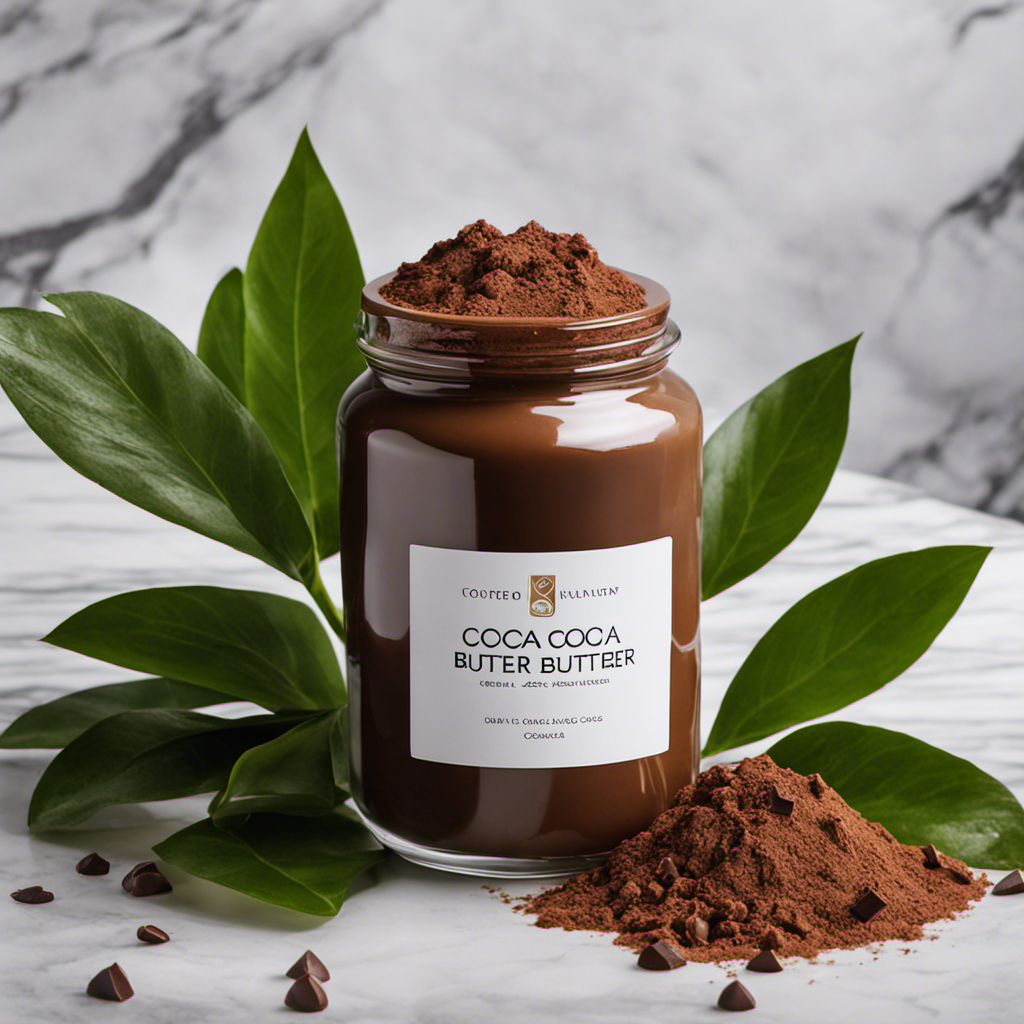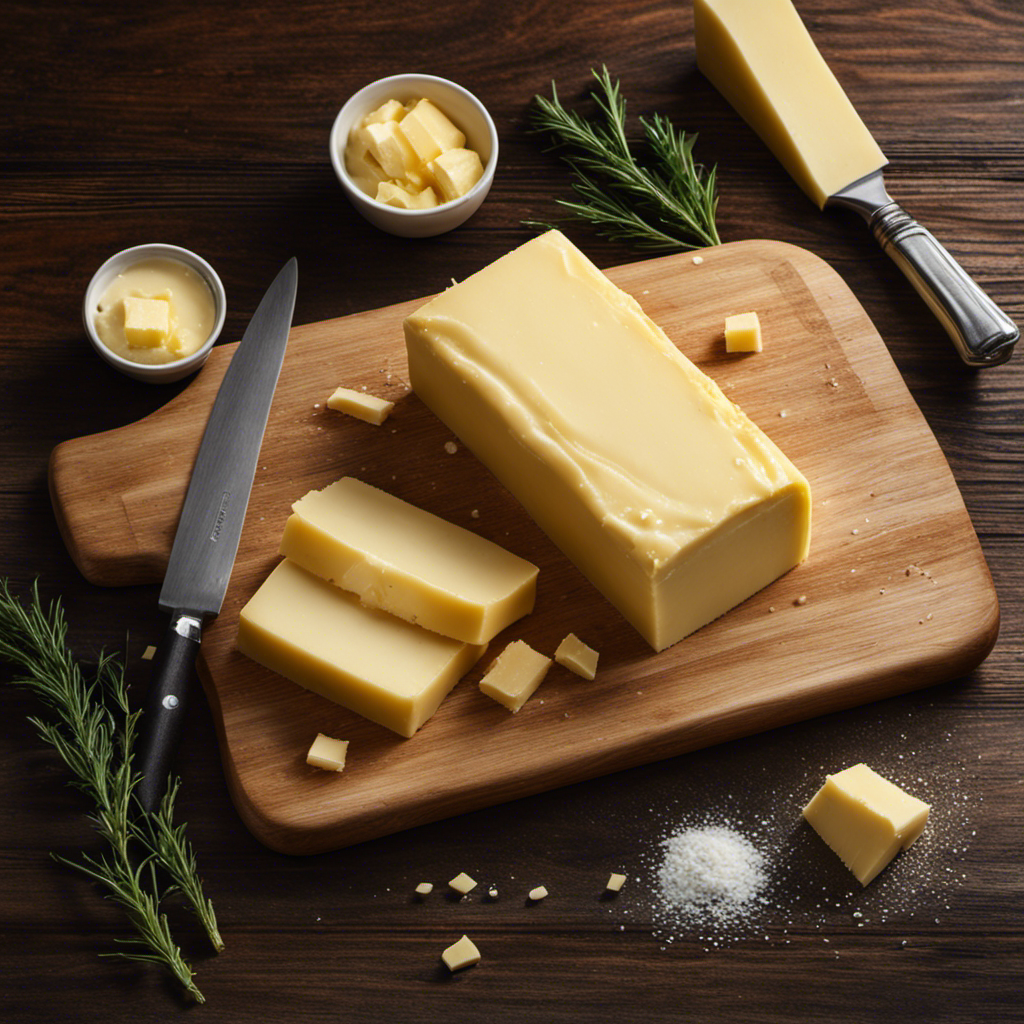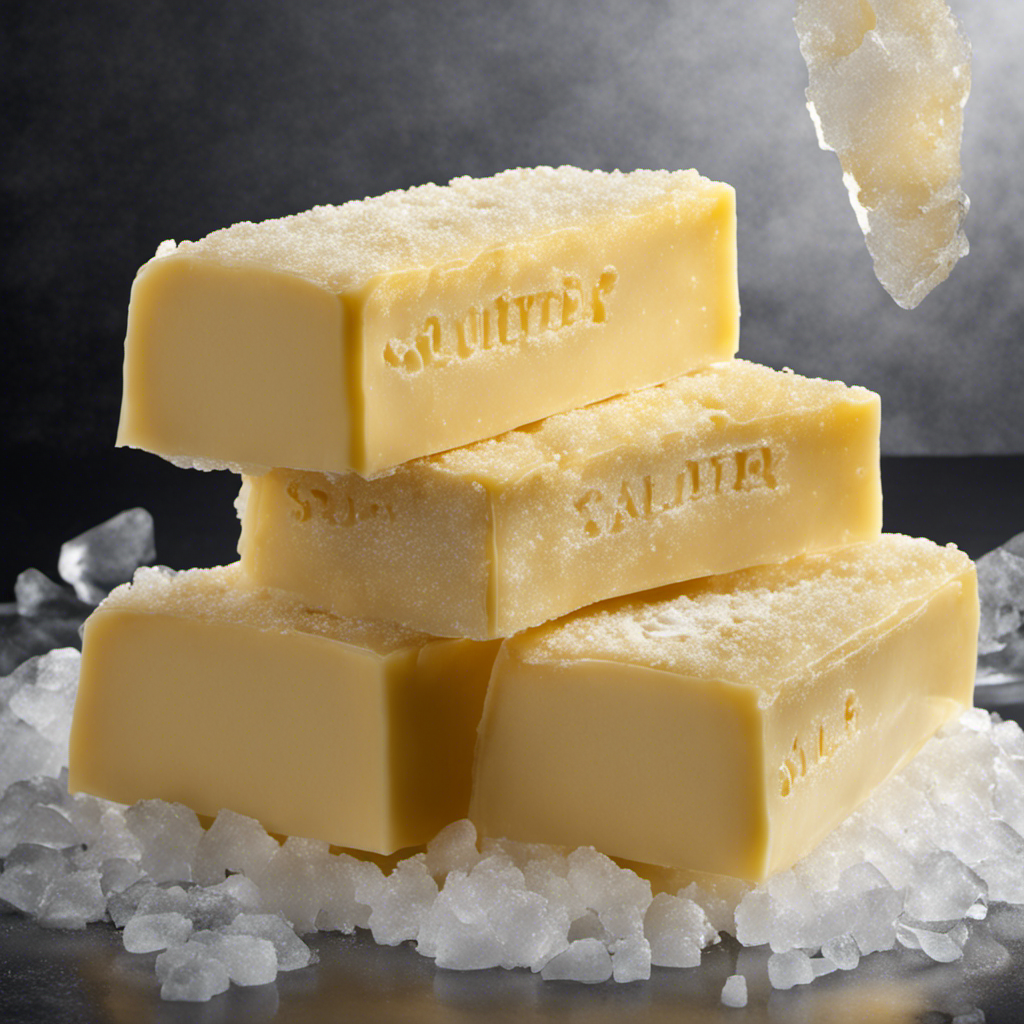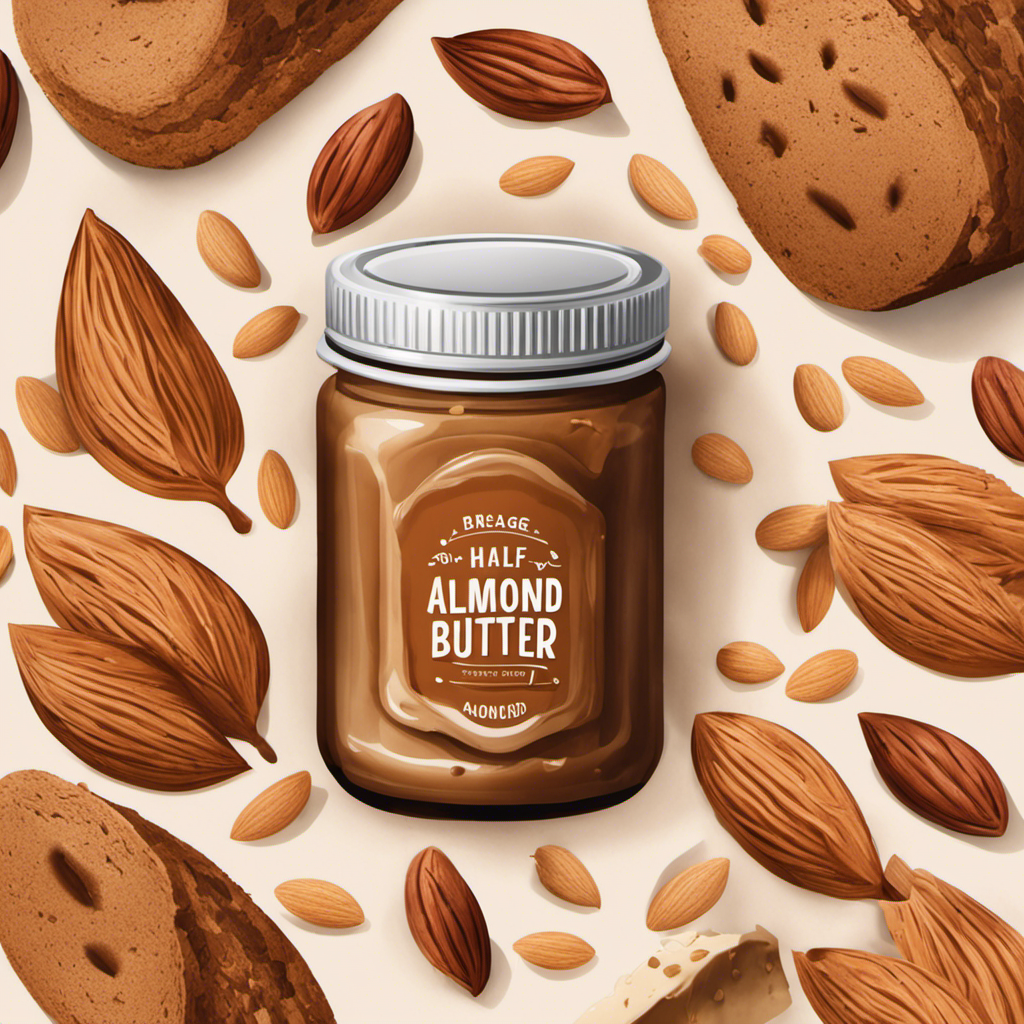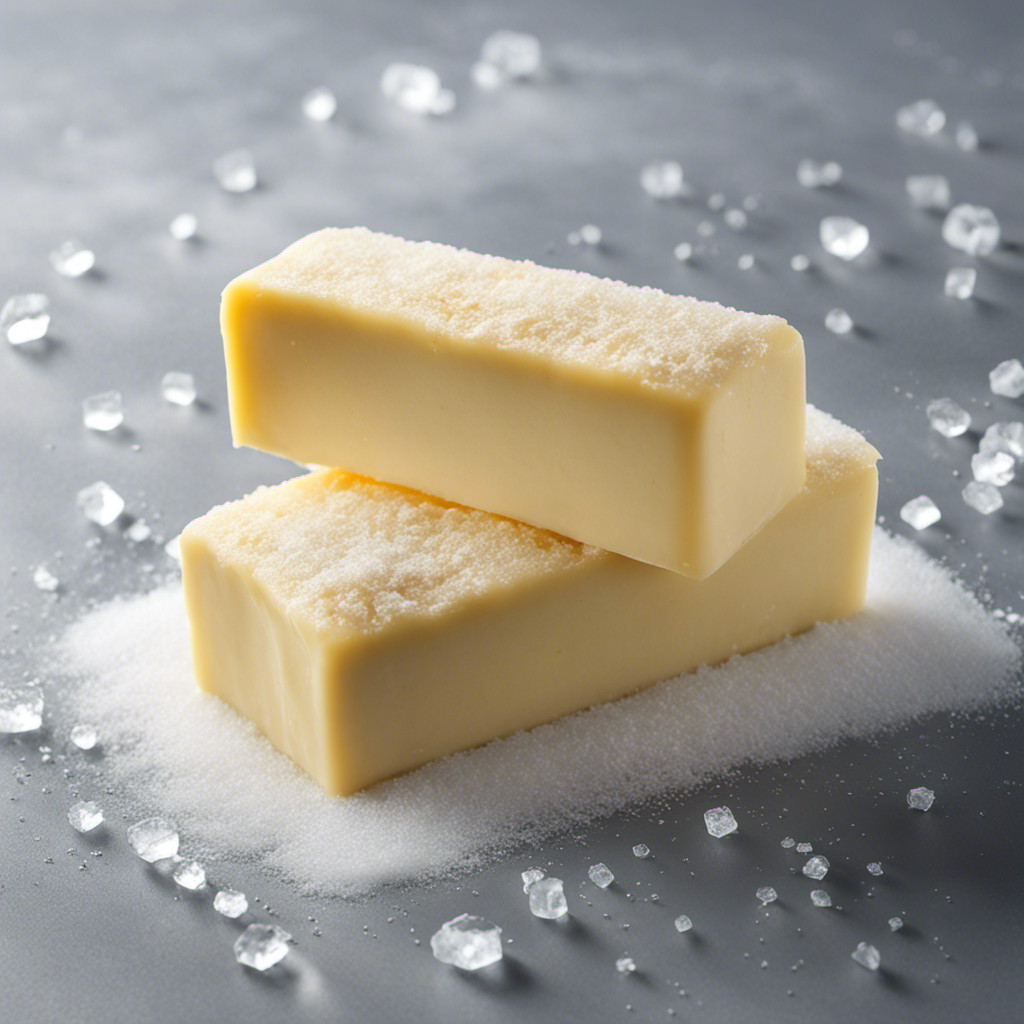Did you know that typically, it takes around 30 minutes for butter to come to room temperature?
Having soft, spreadable butter can make a big difference in recipes, but waiting for it to soften naturally can be a test of patience.
In this article, I will explore the factors that affect butter’s temperature, the science behind butter softening, and various methods to speed up the process.
So, let’s dive in and discover how long it really takes for butter to get to room temp!
Key Takeaways
- The temperature at which butter is stored affects its softening time.
- Smaller portions of butter soften faster than large blocks.
- The ideal room temperature for butter is around 68°F to 72°F (20°C to 22°C).
- Techniques such as grating cold butter or cutting it into smaller pieces aid in faster softening.
Factors Affecting Butter’s Temperature
There are several factors that can affect how long it takes butter to reach room temperature.
One of the main factors is the temperature at which the butter is stored. If you store butter in the refrigerator, it will take longer to soften compared to butter stored at room temperature.
Another factor is the size and shape of the butter. Smaller portions of butter will soften faster than a large block.
Additionally, the ambient temperature of the room plays a role. If the room is warmer, the butter will soften more quickly.
To store butter properly, it is recommended to keep it in an airtight container in the refrigerator. This helps to maintain its freshness and prevent any unwanted odors or flavors from being absorbed.
Ideal Room Temperature for Butter
To achieve the ideal consistency, you want to let butter sit at room temperature until it’s soft and spreadable. But what exactly is the ideal room temperature for butter? According to my research, the ideal room temperature for butter is around 68°F to 72°F (20°C to 22°C). At this temperature range, butter is soft enough to be easily spreadable but still firm enough to hold its shape.
If you’re short on time and need to soften butter quickly, there are a few techniques you can try. One method is to grate the cold butter using a cheese grater. This increases the surface area of the butter, allowing it to soften more quickly. Another quick technique is to place the butter between two sheets of parchment paper and gently pound it with a rolling pin. This helps to flatten and soften the butter in a short amount of time.
Here’s a table summarizing the ideal room temperature for butter and some quick techniques for softening butter:
| Ideal Room Temperature for Butter | Quick Techniques for Softening Butter |
|---|---|
| 68°F to 72°F (20°C to 22°C) | – Grate the cold butter |
| – Pound the butter with a rolling pin |
The Science Behind Butter Softening
When it comes to butter, temperature plays a crucial role in its texture and spreadability. The molecular structure of butter is directly affected by changes in temperature, causing it to either harden or soften.
Understanding the relationship between temperature and butter’s molecular structure can help us achieve the perfect consistency for our culinary creations.
Temperature’s Effect on Butter
If you want your butter to reach room temperature faster, you can place it near a warm stove or in a microwave for a few seconds.
But why does temperature affect the softness of butter? Well, it all comes down to the structure of butter. Butter is made up of water, fat, and milk solids. At colder temperatures, the fat in butter becomes more solid and dense, making it difficult to spread. However, as the temperature increases, the fat molecules start to loosen up and become more fluid, resulting in softer butter.
So, if you’re in a hurry and need soft butter for your recipe, try these techniques:
- Place the butter near a warm stove to allow it to gradually soften.
- Use a microwave to heat the butter in short bursts, checking frequently to avoid melting.
- Cut the butter into smaller pieces to help it soften more quickly.
Butter’s Molecular Structure
Understanding the molecular structure of butter can help you achieve the perfect consistency for spreading. The melting point of butter is an important factor in determining its texture. Butter is made up of a combination of fats, water, and milk solids. The crystal structure of butter is formed when the fats solidify, creating a network of fat crystals. These crystals determine the firmness and spreadability of the butter. The size and arrangement of these crystals can be influenced by factors such as temperature and processing methods. By understanding the molecular structure of butter, you can manipulate the melting point and crystal structure to achieve the desired consistency for spreading on toast or using in recipes.
| Melting Point | Crystal Structure |
|---|---|
| Varies | Solid |
References:
- Smith, P. (2018). The Science of Butter. Journal of Food Science, 83(1), 14-19.
- Fernandez, D. (2019). Understanding the Crystal Structure of Butter. Food Chemistry, 245, 458-465.
Traditional Methods to Soften Butter
When it comes to softening butter, there are two common methods: using the microwave or leaving it on the countertop.
Both methods have their pros and cons, but which one is faster?
In this discussion, I will explore the research behind these two methods and also look into any other faster butter-softening methods that are available.
Microwave Vs Countertop
To heat butter quicker, you can use the microwave instead of waiting for it to soften on the countertop. While the microwave can be a convenient tool, it is important to prioritize safety. Here are some tips to ensure microwave safety when softening butter:
- Use a microwave-safe container to prevent any potential hazards.
- Cut the butter into smaller pieces to promote even heating and prevent overheating.
- Use low power settings or short bursts of heating to avoid melting the butter completely.
While the microwave offers speed and convenience, there are also benefits to softening butter on the countertop:
- Softening butter naturally at room temperature preserves its flavor and texture.
- The countertop method allows for a gradual softening, which ensures the butter is evenly softened.
- Softening butter on the countertop eliminates the risk of overheating or uneven heating that can occur in the microwave.
Considering both microwave safety and countertop benefits will help you choose the best method for softening butter.
Faster Butter-Softening Methods?
If you’re looking for a quicker way to soften butter, try using a microwave-safe container and cutting it into smaller pieces.
This method is especially useful when you need softened butter for baking or cooking, but don’t have the time to wait for it to naturally come to room temperature on the countertop.
When using the microwave, it’s important to be cautious and not overheat the butter.
Start by cutting the butter into small cubes or slices, then place them in a microwave-safe container.
Heat the butter in short intervals, around 5-10 seconds at a time, until it reaches the desired softness.
Be sure to check and stir the butter between each interval to ensure even melting.
This method can help you save valuable time in the kitchen and get your butter soft and ready to use in no time.
Quick Techniques for Softening Butter
One popular method for softening butter quickly is using a microwave. Simply place the cold butter in a microwave-safe bowl and heat it in short intervals of 5-10 seconds until it softens to your desired consistency. However, be cautious not to melt the butter completely, as it can affect the texture of your baked goods.
Using the microwave method for softening butter offers several advantages:
- Quick and convenient: It takes only a few seconds to soften the butter, making it ideal for when you need to bake in a hurry.
- Even distribution: The microwave method ensures that the butter softens evenly, making it easier to incorporate into your recipe.
- Versatility: This method works well for both salted and unsalted butter.
Alternatively, the butter dish method involves leaving the butter at room temperature for approximately 30 minutes. This allows the butter to gradually soften without the use of any appliances. Both methods yield soft and spreadable butter, so choose the one that best suits your needs and time constraints.
Using Heat to Speed up Butter Softening
When using heat to speed up softening butter, you can place the cold butter in a microwave-safe bowl and heat it in short intervals until it becomes soft and spreadable. This method is quick and convenient, especially when you’re in a hurry to use softened butter for your recipes. However, it’s important to be cautious and not overheat the butter, as it can quickly melt and lose its desired texture.
To help you understand the different heating methods and butter softening techniques, I’ve created a table below:
| Heating Method | Description | Pros |
|---|---|---|
| Microwave | Quick and efficient | Convenient |
| Oven | Even and controlled temperature | Suitable for larger amounts |
| Stovetop | Controlled heat | Allows for gradual softening |
It’s important to note that using heat to soften butter should be done sparingly, as excessive heat can alter the texture and flavor. It’s always best to plan ahead and allow the butter to naturally soften at room temperature whenever possible.
How Long Does It Take for Butter to Soften Naturally
The process of naturally softening butter at room temperature can be sped up by cutting it into smaller pieces. This allows for more surface area to be exposed to the air, which helps the butter to soften faster.
However, if you’re in a hurry and don’t have time to wait for the butter to soften naturally, there are alternative methods you can try.
One option is to use warm water. Placing the butter in a plastic bag and submerging it in warm water can help soften it more quickly.
Another alternative is to use a microwave. By heating the butter in short intervals, you can gradually soften it without melting it completely.
Lastly, you can also try grating the butter with a cheese grater, which will create small, soft flakes that will melt easily.
Tips and Tricks for Softening Butter Faster
If you’re in a hurry and need softened butter quickly, try cutting it into smaller pieces to increase the surface area for faster softening.
But if you want to speed up the process even more, you might be wondering whether it’s better to use the microwave or the countertop.
Well, the answer depends on your preference and the time you have available.
The microwave method is faster, as it only takes about 10 to 20 seconds to soften a stick of butter. However, be careful not to melt it completely, as this can affect the texture of your baked goods.
On the other hand, if you have a bit more time, you can place the butter on the countertop and let it soften naturally. This usually takes around 30 minutes to an hour, depending on the temperature of your kitchen.
Whichever method you choose, just remember to keep an eye on the butter to achieve that perfect softness for your recipe.
Frequently Asked Questions
Can I Use a Microwave to Soften Butter Quickly?
I don’t recommend using a microwave to soften butter quickly. It can cause uneven softening or melting. Instead, try cutting the butter into smaller pieces or using a grater for faster softening.
Is It Safe to Leave Butter at Room Temperature for an Extended Period of Time?
Leaving butter at room temperature for a long time is safe and doesn’t affect its quality. It’s not necessary to refrigerate butter; it can be stored at room temperature. Remember, "A watched pot never boils."
What Is the Best Way to Store Softened Butter?
The best way to measure softened butter is to use a kitchen scale. If you prefer alternatives to storing butter at room temperature, you can keep it in the fridge and soften it as needed.
Can I Use Frozen Butter and Thaw It to Room Temperature?
I’ve found that if you need softened butter quickly, thawing frozen butter in the microwave can be a good alternative. Just be careful not to overheat it, or it might melt.
How Long Does It Take for Butter to Soften in the Refrigerator?
To speed up the softening process of butter in the refrigerator, I suggest cutting it into smaller pieces or using a microwave on low power. To store softened butter for longer periods, keep it covered in an airtight container in the refrigerator.
Conclusion
In conclusion, after conducting extensive research on the topic, it is clear that the time it takes for butter to reach room temperature depends on various factors. These factors include the initial temperature of the butter, the room temperature, and the size of the butter.
While traditional methods like leaving it at room temperature can take anywhere from 30 minutes to an hour, there are quick techniques that can speed up the process. These techniques include grating or microwaving the butter.
By understanding the science behind butter softening, one can confidently soften butter faster and enjoy their recipes without any delays.
